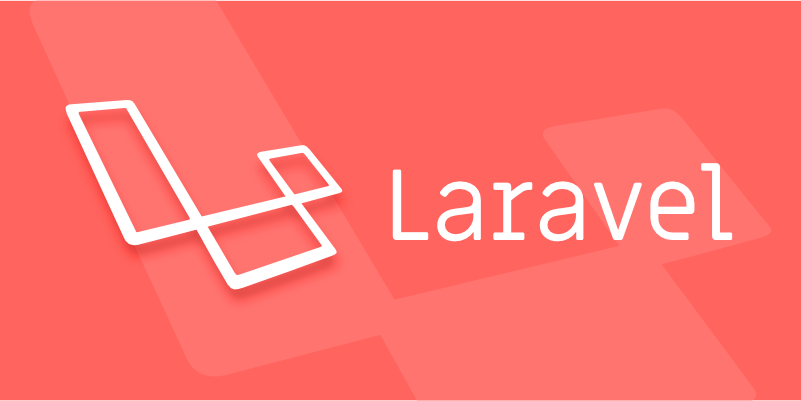Using Eloquent Query Scopes in Laravel.
Jul 29, 2025 am 01:19 AMEloquent query scope improves code clarity and reusability by encapsulating common query logic. 1. The local scope is defined with methods starting with scope, such as scopeActive() is used to filter enabled users; 2. The dynamic scope supports parameter passing, such as scopeStatus($status) to achieve flexible state filtering; 3. The global scope is automatically applied to all queries, suitable for data isolation but needs to be used with caution; 4. Multiple scopes can be combined in chains to enhance semantic expression and maintenance; 5. Complex queries can be centrally processed through conditional judgments to improve flexibility.

In Laravel, Eloquent Query Scopes is a very practical but often underestimated feature. It can help you encapsulate commonly used query logic, making the code clearer and more reusable. If you often write duplicate where conditions or want to organize query logic in your model, using Query Scopes is a good choice.

What is Eloquent query scope?
Simply put, the Eloquent query scope is a method defined in the model to add some common query conditions. You can understand it as a "preset filter". Every time this scope is called, the query conditions you defined will be automatically added.
For example, if you want to filter out all users with status enabled, you can define an active() scope, so that when checking active users in the future, you don’t have to write where('status', 1) every time.

How to define and use Local Scopes
Defining a local scope is simple, you just need to create a method starting with scope in the model.
public function scopeActive($query)
{
return $query->where('status', 1);
}Then you can use it like this:

User::active()->get();
Note: The first parameter to the scope must be
$query, representing the current query builder.
Common application scenarios include:
- Filter published content:
scopePublished() - Filter the records marked as soft deleted:
scopeNotDeleted() - Query by time range:
scopeLastWeek()
How to use Parameterized Scopes
Sometimes you want the scope to receive parameters. For example, not only to check the user with "status 1", but also want to pass in different status values.
This can be done at this time:
public function scopeStatus($query, $status)
{
return $query->where('status', $status);
}Pass parameters when using:
User::status(2)->get();
This method is very suitable for scenarios where flexible value transfer is required, such as search by keyword, pagination offset, time interval, etc.
What should I pay attention to when using Global Scopes?
In addition to local scopes, Laravel supports global scopes, which are automatically applied every time the model is queryed. Suitable for unified data isolation, such as only access to the current tenant's data in a multi-tenant system.
To use global scope, you need to create a class to implement Illuminate\Database\Eloquent\Scope interface, and then call addGlobalScope() in booted() method of the model.
protected static function booted()
{
static::addGlobalScope('tenant', function ($builder) {
$builder->where('tenant_id', tenant_current_id());
});
} However, it should be noted that once the global scope is added, it cannot be easily removed . If you want to bypass it temporarily, you can only cancel it by using withoutGlobalScopes() method.
A little trick: combine multiple scopes
You can combine multiple scopes like building blocks, such as:
User::active()->verified()->recent()->get();
Each scope returns a query constructor instance, so it can be called in a chain. This writing is not only semantic, but also easy to test and maintain.
In addition, if a query is particularly complex, multiple conditional judgments can be encapsulated in one scope, such as:
public function scopeFilter($query, $filters)
{
if (! empty($filters['status'])) {
$query->where('status', $filters['status']);
}
if (! empty($filters['search'])) {
$query->where('name', 'like', '%' . $filters['search'] . '%');
}
}In this way, the filter parameters transmitted from the front end can be processed centrally.
Basically that's it. Query Scopes is not complicated, but is very useful in actual development. Using it rationally can make your model layer cleaner and easier to write consistent query logic.
The above is the detailed content of Using Eloquent Query Scopes in Laravel.. For more information, please follow other related articles on the PHP Chinese website!

Hot AI Tools

Undress AI Tool
Undress images for free

Undresser.AI Undress
AI-powered app for creating realistic nude photos

AI Clothes Remover
Online AI tool for removing clothes from photos.

Clothoff.io
AI clothes remover

Video Face Swap
Swap faces in any video effortlessly with our completely free AI face swap tool!

Hot Article

Hot Tools

Notepad++7.3.1
Easy-to-use and free code editor

SublimeText3 Chinese version
Chinese version, very easy to use

Zend Studio 13.0.1
Powerful PHP integrated development environment

Dreamweaver CS6
Visual web development tools

SublimeText3 Mac version
God-level code editing software (SublimeText3)

Hot Topics
 How to use PHP to develop a Q&A community platform Detailed explanation of PHP interactive community monetization model
Jul 23, 2025 pm 07:21 PM
How to use PHP to develop a Q&A community platform Detailed explanation of PHP interactive community monetization model
Jul 23, 2025 pm 07:21 PM
1. The first choice for the Laravel MySQL Vue/React combination in the PHP development question and answer community is the first choice for Laravel MySQL Vue/React combination, due to its maturity in the ecosystem and high development efficiency; 2. High performance requires dependence on cache (Redis), database optimization, CDN and asynchronous queues; 3. Security must be done with input filtering, CSRF protection, HTTPS, password encryption and permission control; 4. Money optional advertising, member subscription, rewards, commissions, knowledge payment and other models, the core is to match community tone and user needs.
 Guide to matching Laravel routing parameter passing and controller method
Jul 23, 2025 pm 07:24 PM
Guide to matching Laravel routing parameter passing and controller method
Jul 23, 2025 pm 07:24 PM
This article aims to resolve common errors in the Laravel framework where routing parameter passing matches controller methods. We will explain in detail why writing parameters directly to the controller method name in the routing definition will result in an error of "the method does not exist", and provide the correct routing definition syntax to ensure that the controller can correctly receive and process routing parameters. In addition, the article will explore best practices for using HTTPDELETE methods in deletion operations.
 Data_get practice for dynamic access to model association properties in Laravel Livewire
Jul 23, 2025 pm 06:51 PM
Data_get practice for dynamic access to model association properties in Laravel Livewire
Jul 23, 2025 pm 06:51 PM
This article aims to solve how to efficiently and securely access deep properties associated with model through string paths when dynamically rendering data in LaravelLivewire components. When you need to obtain specific fields of the associated model based on a configuration string (such as "user.name"), access using object properties will fail. The article will introduce Laravel's data_get helper function in detail and provide code examples to show how to use it to solve this problem gracefully and ensure the flexibility and robustness of data acquisition.
 How to develop AI intelligent form system with PHP PHP intelligent form design and analysis
Jul 25, 2025 pm 05:54 PM
How to develop AI intelligent form system with PHP PHP intelligent form design and analysis
Jul 25, 2025 pm 05:54 PM
When choosing a suitable PHP framework, you need to consider comprehensively according to project needs: Laravel is suitable for rapid development and provides EloquentORM and Blade template engines, which are convenient for database operation and dynamic form rendering; Symfony is more flexible and suitable for complex systems; CodeIgniter is lightweight and suitable for simple applications with high performance requirements. 2. To ensure the accuracy of AI models, we need to start with high-quality data training, reasonable selection of evaluation indicators (such as accuracy, recall, F1 value), regular performance evaluation and model tuning, and ensure code quality through unit testing and integration testing, while continuously monitoring the input data to prevent data drift. 3. Many measures are required to protect user privacy: encrypt and store sensitive data (such as AES
 How to set environment variables in PHP environment Description of adding PHP running environment variables
Jul 25, 2025 pm 08:33 PM
How to set environment variables in PHP environment Description of adding PHP running environment variables
Jul 25, 2025 pm 08:33 PM
There are three main ways to set environment variables in PHP: 1. Global configuration through php.ini; 2. Passed through a web server (such as SetEnv of Apache or fastcgi_param of Nginx); 3. Use putenv() function in PHP scripts. Among them, php.ini is suitable for global and infrequently changing configurations, web server configuration is suitable for scenarios that need to be isolated, and putenv() is suitable for temporary variables. Persistence policies include configuration files (such as php.ini or web server configuration), .env files are loaded with dotenv library, and dynamic injection of variables in CI/CD processes. Security management sensitive information should be avoided hard-coded, and it is recommended to use.en
 How to make PHP container support automatic construction? Continuously integrated CI configuration method of PHP environment
Jul 25, 2025 pm 08:54 PM
How to make PHP container support automatic construction? Continuously integrated CI configuration method of PHP environment
Jul 25, 2025 pm 08:54 PM
To enable PHP containers to support automatic construction, the core lies in configuring the continuous integration (CI) process. 1. Use Dockerfile to define the PHP environment, including basic image, extension installation, dependency management and permission settings; 2. Configure CI/CD tools such as GitLabCI, and define the build, test and deployment stages through the .gitlab-ci.yml file to achieve automatic construction, testing and deployment; 3. Integrate test frameworks such as PHPUnit to ensure that tests are automatically run after code changes; 4. Use automated deployment strategies such as Kubernetes to define deployment configuration through the deployment.yaml file; 5. Optimize Dockerfile and adopt multi-stage construction
 Deep analysis of matching Laravel routing parameter transfer and controller method
Jul 23, 2025 pm 07:15 PM
Deep analysis of matching Laravel routing parameter transfer and controller method
Jul 23, 2025 pm 07:15 PM
This article deeply explores the correct transmission of routing parameters and the matching mechanism of controller methods in the Laravel framework. In response to the common "method does not exist" error caused by writing routing parameters directly to the controller method name, the article elaborates on the correct way to define routing, that is, declare parameters in the URI and receive them as independent parameters in the controller method. At the same time, the article also provides code examples and suggestions on best practices for HTTP methods, aiming to help developers build more robust and RESTful Laravel applications.
 Laravel routing parameter passing: correctly define the controller method and routing binding
Jul 23, 2025 pm 07:06 PM
Laravel routing parameter passing: correctly define the controller method and routing binding
Jul 23, 2025 pm 07:06 PM
This article discusses the correct posture of parameter transfer of controller method in Laravel routing in depth. In response to common errors caused by writing routing parameters directly to the controller method name, the correct routing definition syntax is explained in detail, and the mechanism of Laravel automatic parameter binding is emphasized. At the same time, the article recommends using HTTPDELETE method that is more in line with RESTful specifications to handle deletion operations to improve the maintainability and semantics of the application.






